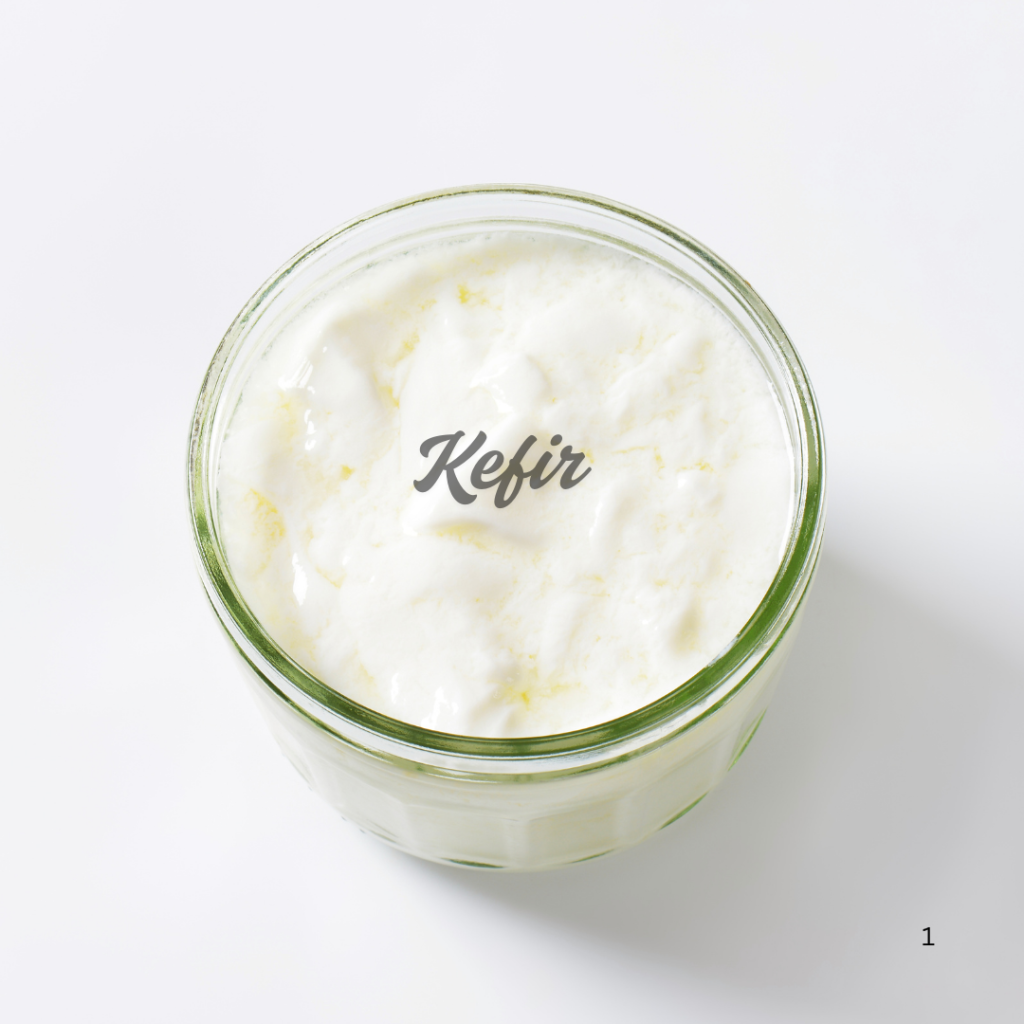
As we entered the twenty-first century, modern life led to an increased reliance on refined food products and a preference for animal-based foods. At the same time, rising awareness of the connection between stress, diet, and health has driven consumers to seek out “functional foods”—products that offer health benefits beyond basic nutrition (1).
Kefir obtained by the fermentation of this microflora is presented as a functional product because it has some positive effects on human health (2). Kefir is a sour, foamy, and slightly alcoholic milk drink obtained as a result of acid and alcohol fermentation (1). It is a fermented dairy product traditionally produced in the Caucasus Mountains and has been used in Central Asian and Eastern European countries, Russia for many years (1, 3).
Traditionally, kefir is made by inoculating pasteurized milk (cooled to 20-25°C) with 2-10% kefir grains by weight. The mixture is then incubated for 18-24 hours before being strained to remove the grains. Recently, however, the use of lyophilized cultures derived from kefir grains has become more common in production. This method increases yield and reduces the risk of contamination. Kefir grains themselves are small, irregularly shaped, yellow-white, and have a hard granular texture, resembling miniature cauliflower florets (4).
Kefir grains contain a wide variety of symbiotic microorganisms, including Lactobacillus, Lactococcus, and Leuconostoc. These microorganisms are added to milk during the fermentation process (3). The biomass of kefir grains increases by 3-3.5% with each fermentation cycle (5). This diverse microbiota is responsible for kefir’s unique sensory properties and health benefits.
Kefir is a naturally carbonated, refreshing dairy product with a distinctive flavor profile. This is due to the mixture of lactic acid, ethanol, acetoin, acetaldehyde, and other fermentation by-products obtained from diverse microorganisms present in kefir grains (6).
Lactic acid plays a key role in producing high-quality fermented milk products, influencing both flavor and texture. The concentration of lactic acid is critical for achieving the desired taste (1).
The microbiological composition of kefir gives it powerful probiotic properties, thanks to the combined effects of lactic acid bacteria and yeasts. In addition to lactobacilli, kefir also contains lactococci, acetic acid bacteria, and various yeasts (1). Studies comparing the probiotic effects of milk fermented with traditional probiotic bacteria versus kefir have shown that kefir provides functional benefits, such as immune system stimulation, reduced symptoms of lactose intolerance, and potential antimutagenic, hypocholesterolemic, and anticancer properties (1).
One study even demonstrated that kefir supplementation, even at low doses, led to a significant reduction in oxidative stress and high blood pressure induced by angiotensin II (7).
Kefir has also shown antimicrobial, antiviral, and anti-inflammatory properties. It has been shown to inhibit angiotensin-converting enzyme (ACE) activity, modulate cholesterol metabolism, suppress tumor growth, accelerate wound healing, and improve immune function. Furthermore, it has demonstrated positive effects in alleviating asthma symptoms and managing allergies (8).
Author Kubra Haktan
REFERENCES
- Dinkci, N., Kesenkaş, H., & etc, a. (2015). An innovative approach: cow/oat milk based kefir. Mljekarstvo / Dairy, 177-186.
- Özdemir, N., Taş, T. K., & Guzel-Seydim, Z. (2015). Effect of Gluconacetobacter spp. on Kefir Grains and Kefir Quality. Food Science and Biotechnology, 99-106 .
- J.Aryana, K., & W.Olson, D. (2017). A 100-Year Review: Yogurt and other cultured dairy products. Journal of Dairy Science, 9987-10013.
- R.Hertzler, S., & M.Clancy, S. (2003). Kefir improves lactose digestion and tolerance in adults with lactose maldigestion. Journal of the American Dietetic Association, 582-587.
- B.Guzel-Seydim, Z., Gökırmaklı, Ç., & K.Greene, A. (2021). A comparison of milk kefir and water kefir: Physical, chemical, microbiological and functional properties. Trends in Food Science & Technology, 42-53.
- Taş, T. K., Seydim, A. C., & etc, a. (2012). Effects of different fermentation parameters on quality characteristics of kefir. Journal of Dairy Science, 780-789.
- L.Monteiro, B., T.Dias, A., C.Wanderkoke, S., & etc, a. (2020). Protective effects of kefir in the angiotensin II-dependent hypertension. Journal of Functional Foods(75). doi:https://doi.org/10.1016/j.jff.2020.104260
- Hamida, R. S., Shami, A., & etc, a. (2021). Kefir: A protective dietary supplementation against viral infection. Biomedicine & Pharmacotherapy(133). doi:https://doi.org/10.1016/j.biopha.2020.110974
